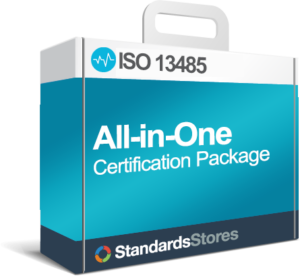ISO 13485:2016 & Annex L
What is the Annex L Platform?
Annex L (originally called Annex SL, then renamed in 2019 as Annex L) is a new management system format that helps streamline creation of new standards and make implementing multiple standards within one organization easier. Annex L addresses integration issues by creating a “template” for all Management Systems.
All new ISO Management System Standards are based on the Annex L framework except ISO 13485:2016, which is based upon ISO 9001:2008, which uses the old format.
Why doesn’t ISO 13485:2016 follow Annex L?
The main reason that ISO 13485:2016 did not adopt the new structure is because the planning process for this standard began before ISO 9001:2015, and the old ISO 13485:2003 structure was well-aligned with the majority of members in other countries.
Another reason that ISO 13485:2016 did not take on the new structure is because the new Annex L focuses on the satisfaction of the customer. In general, ISO 9001:2015 is driven by customer focus and making the correct decisions to minimize the risk of customer dissatisfaction. ISO 13485 is driven by regulations to ensure that the medical devices placed on the market by organizations are safe and effective.
Here is the new “High-Level Standard” (HSL) format:
- 0: Introduction
- 1: Scope
- 2: Normative references
- 3: Terms and definitions
- 4: Context of the organization
- 5: Leadership
- 6: Planning
- 7: Support
- 8: Operation
- 9: Performance evaluation
- 10: Improvement
Helpful Tools
- ISO 13485:2003 to 13485:2016 Transition Gap Analysis Checklist
- ISO 9001:2015 / ISO 13485:2016 Combined Gap Analysis Checklist
- Combined ISO 9001:2015 and ISO 13485:2016 QMS Package
- ISO 13485:2016 All-In-One Certification Packages
Annex L: Features/Benefits
There are many reasons for management system standards (MSS) writers to adopt the foundational Annex L, including:
- Eliminating conflicts in MSS platforms
- Faster development of standards
- Less duplication of concepts, terms and potentially shared text
- Less low-value revisions to common or shared areas
- Integrating high level, common business management goals, issues, needs
Annex L addresses these needs by the alignment of similar clauses and includes:
Risk Management
Although ISO 13485 already incorporates Risk Management and has its own risk standard: ISO 14971, Annex L now elevates the preventive and corrective action concept into a more encompassing risk assessment process by asking the organization to provide a reasonable analysis of risks and successful responses to them.
Accessible Documentation
Annex L outlines additional requirements to both documents and communicates the QMS. This expanded approach to documentation is meant to allow and support other means of viewing, storing, revising and distributing documentation such as via internal and external networks (i.e. cloud computing) and a wider array of formats.
Wider Involvement
It remains to be seen how ISO 13485 will consider the “Context of the Organization”, which requires the company to listen not only to customers, employees, and suppliers but to those who their operations may also affect, such as the communities in which they operate or have significant influence. Quality planning then becomes a broader search to uncover potentially relevant issues that may impact operations, and the development of a quality policy for a “newer age” – for instance as a deeper information base to decide how risks might be better anticipated.
Why Annex L is useful
An IMS can streamline a businesses operation by merging different areas of compliance. For example, combining quality, environmental and safety into a single IMS requires fewer resources and is more likely to succeed than maintaining separate management systems for each. Standards can either be combined or integrated. An Integrated Management System integrates two or more standards from different disciplines into one. (Example: ISO 9001, ISO 14001, ISO 45001.) A Combined Management System combines two more standards from the same discipline into one. (Example: ISO 9001, ISO 13485.) Companies visiting our IMS website, often request combinations of standards such as:
- Quality Management
- ISO 9001 (General Quality Management Systems
- IATF 16949 (Automotive)
- AS9100 (Aircraft, Space & Defense))
- Environmental Management
- ISO 14001 (Environmental Management Systems)
- Safety Management
- ISO 45001 (Occupational Health & Safety)
Rather than just creating parallel systems, true integration means that similar processes are implemented without duplication or confusion. IMS elements that exist in each system are treated as common resources. They are defined, deployed and managed in the same manner and do not have to deal with multiple, often slightly different interpretations of their roles in executing each standard. Annex L should make the creation of an IMS much easier.


